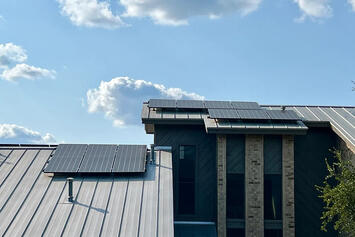
Hyping solar energy is one of America’s most renewable resources. For instance, in 1978, Ralph Nader declared that “everything will be solar in 30 years.” In 1979, President Jimmy Carter declared the US needed to capture more energy from the sun because of “inevitable shortages of fossil fuels.”
In 2011, in the New York Times, Paul Krugman claimed we are “on the cusp of an energy transformation driven by the rapidly falling cost of solar power.” In 2015, presidential candidate Hillary Clinton pledged that if elected president, she would oversee the installation of 500 million solar panels.
In 2021, the Department of Energy released a study that claimed solar “has the potential to power 40% of the nation’s electricity by 2035.” That’s a mighty big claim. Last year, solar accounted for about 5% of US electricity production. Furthermore, solar only provided about 2.2 exajoules of primary energy to the US economy out of 94.2 EJ used. The DOE also claimed solar could reach 45% of US electricity production by 2050. (That same year, President Joe Biden declared that climate change poses “an existential threat to our lives.”)
The solar hype continued last month in the pages of the New York Times with an article by David Wallace-Wells headlined, “What Will We Do With Our Free Power?” The nut graf of Wallace-Wells’ article appeared near the end when he claimed, “the exploding scale and disappearing cost of solar do mean that the energy game will now be played according to some pretty different ground rules.”
Before going further, a disclosure is in order. I understand the economics of solar. About eight years ago, we had 8.2 kilowatts of solar capacity installed on the roof of our house. Why? We got three different subsidies to do so. We now produce about 12 megawatt-hours of electricity per year and have cut our annual electricity bill in half. Further, that was the second solar system we installed on our home here in Austin. We got fat subsidies for the first system, too.
For the record, I’m opposed to all energy subsidies unless I’m the one getting them. But I digress.
Back to Wallace-Wells. He is correct in reporting that solar capacity is growing. Last year in the US, solar capacity grew nearly four times faster than wind capacity. Solar grew by 24.8 gigawatts, while wind capacity grew by 6.3 GW. Further, due to its higher power density, solar will continue to grow faster, both here in the US and around the world. Wallace-Wells goes on to repeat the same shopworn arguments we’ve been hearing for nearly 50 years: solar is getting cheaper, capacity is growing, sunshine is free, and therefore, it really is different this time.
Read the rest of this piece at Robert Bryce Substack.
Robert Bryce is a Texas-based author, journalist, film producer, and podcaster. His articles have appeared in a myriad of publications including the Wall Street Journal, New York Times, Forbes, Time, Austin Chronicle, and Sydney Morning Herald.
Photo: Solar panels on the roof of our house in Austin, September 13, 2024.












